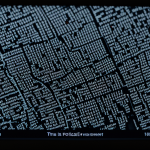Overview of Augmented Reality in Surgery
The concept of augmented reality (AR) in surgery involves overlaying digital information onto the real-world environment to enhance a surgeon’s visual understanding. Fundamentally, AR technology enhances visualization by projecting detailed images and data directly onto a surgeon’s field of view. This sophisticated blend of reality and digital information aids in improving the precision of intricate surgical procedures.
Historically, the integration of augmented reality into medical procedures has evolved significantly. Initially, AR technology found its footing in simpler applications like navigation systems, before transitioning to the complex domain of surgery. Over the years, the continuous advancements in the field of precision medicine have underscored the significance of incorporating AR to boost efficiency and accuracy.
Topic to read : Revolutionizing UK Manufacturing: Unleashing Operational Excellence with Digital Twins
Within the context of surgery, precision is not just vital—it’s essential. Augmented reality plays a critical role in ensuring exactitude, particularly in complex surgeries where minute inaccuracies can lead to significant complications. By employing AR, surgeons can achieve unprecedented levels of precision, enhancing both the outcome for patients and reducing the likelihood of error. The potential of AR in transforming surgical outcomes is profound, marking a new era in the realm of precision medicine.
Benefits of Augmented Reality in Complex Surgeries
Augmented reality (AR) significantly enhances the accuracy and effectiveness of complex surgeries. By providing improved visual guidance, AR assists surgeons in navigating intricate surgical landscapes with enhanced clarity. This is invaluable when precision is paramount to success.
Also read : Unveil the Revolutionary Smart Contact Lenses Redefining Instant Health Monitoring
In practice, AR systems overlay digital images onto a surgeon’s view, facilitating real-time visualisation of critical anatomical structures. As a result, surgeons achieve enhanced accuracy, thereby reducing the risk of errors during surgical interventions. This technological advancement is particularly beneficial in procedures where even a minor mistake can lead to significant patient complications.
Patients benefit from these AR technologies through improved outcomes and reduced complication rates. The precision facilitated by AR inevitably leads to shorter recovery times and enhanced surgical outcomes. The ability of AR to modernise medical procedures encourages faster rehabilitation, owing to fewer post-operative side effects.
Moreover, the long-term positive impact on the patient’s recovery contributes to overall healthcare efficiency. By minimising the potential for surgical complications, AR technology holds substantial promise in transforming surgical medicine. As it integrates further into medical practices, it stands poised to redefine the standards of precision in complex surgeries.
Case Studies of Augmented Reality in Surgical Applications
Case Study: AR in Neurosurgery
In neurosurgery, augmented reality (AR) has revolutionised the precision of delicate brain operations. AR systems utilise advanced imaging technologies to superimpose critical anatomical details directly onto a surgeon’s view during procedures. Outcomes from these AR-assisted operations have shown a measurable increase in the accuracy of tumour resections and have reduced the time it takes to complete surgeries. Surgeons have reported enhanced workflow efficiencies, attributing improved patient outcomes to the clarity and detail offered by AR tools.
Case Study: AR in Orthopedic Surgery
Orthopedic surgery has seen a significant impact from AR, particularly in joint replacement procedures. AR facilitates precise alignment and placement of orthopedic implants, leading to higher success rates and greater patient satisfaction. Surgeons leverage AR for preoperative planning, allowing for tailored approaches to each patient’s unique anatomy, improving the functional outcomes post-surgery.
Case Study: AR in Minimally Invasive Procedures
For minimally invasive procedures, AR offers benefits such as improved spatial awareness. In laparoscopic surgeries, AR aids in navigating through small incisions, decreasing potential for complications. Data comparisons reveal that AR-assisted techniques outperform traditional methods in efficacy and recovery time. Experts anticipate further AR integration will refine these procedures, enhancing future surgical applications.
Technology and Tools Behind Augmented Reality in Surgery
Augmented Reality (AR) is transforming the surgical landscape with cutting-edge tools and technology. Central to this are AR systems renowned for their ability to overlay digital information onto the real-world surgical environment. These systems integrate seamlessly with existing surgical technologies, providing surgeons with augmented visual insights that are crucial for precision.
Leading AR devices used in surgeries boast technical specifications that ensure high-definition imaging and accurate positioning of superimposed data. Devices like the Microsoft HoloLens and Magic Leap are prominent, offering capabilities that enhance intraoperative navigation. They deliver real-time information which guides surgeons precisely through complex procedures.
Integration with other advanced technologies, such as robotic-assisted surgery and three-dimensional imaging, further amplifies the scope of AR tools. These innovations allow for comprehensive planning and execution, ultimately increasing control and reducing potential complications. As more surgeries adopt these AR tools, the potential for improved surgical outcomes and efficiency becomes increasingly tangible, setting a new standard in digital health technology.
Such convergence of advanced AR tools with surgical practices illustrates a significant stride toward more precise, efficient, and patient-centric healthcare delivery.
Expert Insights and Interviews
Augmented Reality (AR) in surgery has captured the interest of both medical professionals and technology developers. Leading surgeons leveraging AR technology emphasize the transformative impact on complex procedures. These experts highlight how AR aids in visualizing critical structures, thereby enhancing precision and reducing surgical errors. For instance, neurosurgeons have noted that AR provides a three-dimensional perspective of lesions, facilitating more accurate resections.
On the technological front, developers of AR systems are working closely with medical teams to refine and innovate. AR pioneers from companies like Microsoft and Magic Leap discuss advancements in imaging capabilities and user interfaces, ensuring compatibility with the rigorous demands of surgical environments. Collaboration remains crucial, as tech experts recognize the need for tailored solutions that meet specific medical requirements.
As the boundaries between tech companies and healthcare practitioners blur, multidisciplinary teams are crafting dynamic solutions. Such engagements are pivotal in advancing AR applications, aligning technological innovations with surgical necessities. This evolving collaboration continues to push the frontier of medical procedures, promising a future where AR becomes an indispensable tool in operating theatres.
Statistical Data on Surgical Accuracy Improvements
The introduction of augmented reality (AR) in surgical settings has initiated an increase in surgical precision and accuracy. By analysing historical data, a clear improvement in surgical statistics is evident with AR adoption. For instance, reports indicate a noticeable enhancement in precision metrics, with some procedures showing accuracy improvements of up to 30% post-AR integration.
Data analysis across various surgical fields has revealed that AR not only improves accuracy but also significantly reduces complication rates. This reduction is attributed to AR’s real-time visualisation capabilities, which aid surgeons in making precise incisions and avoiding critical structures. The pre-implementation complication rates can be notably higher, underscoring the transformative impact of AR.
Looking deeper into precision metrics, AR’s role becomes even more pronounced. Metrics from AR-assisted surgeries reveal a significant decline in error margins, facilitating a smoother postoperative recovery for patients. Statistical evidence supports AR’s contribution to enhancing operational outcomes, which in turn reinforces the effectiveness and necessity of incorporating AR technology in modern surgical procedures, marking a new chapter in precision medicine.
Potential Challenges and Limitations of AR in Surgery
Despite the transformative potential of augmented reality (AR) in surgery, several challenges hinder its widespread adoption. One significant barrier is the steep learning curve surgeons face when integrating AR systems into their practices. Mastering these technologies requires extensive training, and not all medical institutions have the necessary resources to provide such training.
Technical limitations also pose a challenge for AR adoption. Current AR systems can suffer from tracking inaccuracies and display glitches, which may impact the precision surgeons rely on during procedures. Such glitches can be disruptive, emphasising the need for further advancements in AR technology to ensure seamless integration and reliability.
Furthermore, the high cost associated with AR technology represents a major hurdle. For many healthcare facilities, the initial investment needed to incorporate AR tools can be substantial, affecting budget considerations and prioritisation of resources.
The hurdles in adopting AR in surgery also include adjustments in workflow and ensuring compatibility with existing surgical systems. Despite these barriers, ongoing innovations and improvements in AR technology are expected to gradually address these limitations, paving the way for broader acceptance and utilisation in surgical environments.
Future Trends and Implications of Augmented Reality in Medicine
Augmented Reality (AR) technology is expected to revolutionize surgical practices over the coming years. Emerging innovations suggest an anticipated shift towards more intuitive systems, enhancing the surgeon’s ability to perform high-precision interventions. Incorporating machine learning with AR is predicted to assist in real-time decision-making by processing vast amounts of data swiftly and accurately.
The integration of AR into medical education and training shows promise in simulating real-life surgical environments for students. Virtual reality models and AR-enabled simulations can offer practitioners a risk-free platform to hone their skills before operating on patients, thereby improving outcomes.
In the next decade, we foresee AR becoming integral to healthcare delivery, offering improved precision in complex procedures. AR technologies might standardize surgical practices globally by providing consistent, high-quality visuals and guidance that transcend geographical boundaries. As these technologies evolve, their improvements in accuracy and reduction of complications can transform patient care standards.
Ultimately, the widespread adoption of AR could lead to significant changes in surgical methods, creating more efficient workflows and enhancing patient safety and satisfaction. The healthcare industry faces an exciting future with AR setting new benchmarks for excellence.



